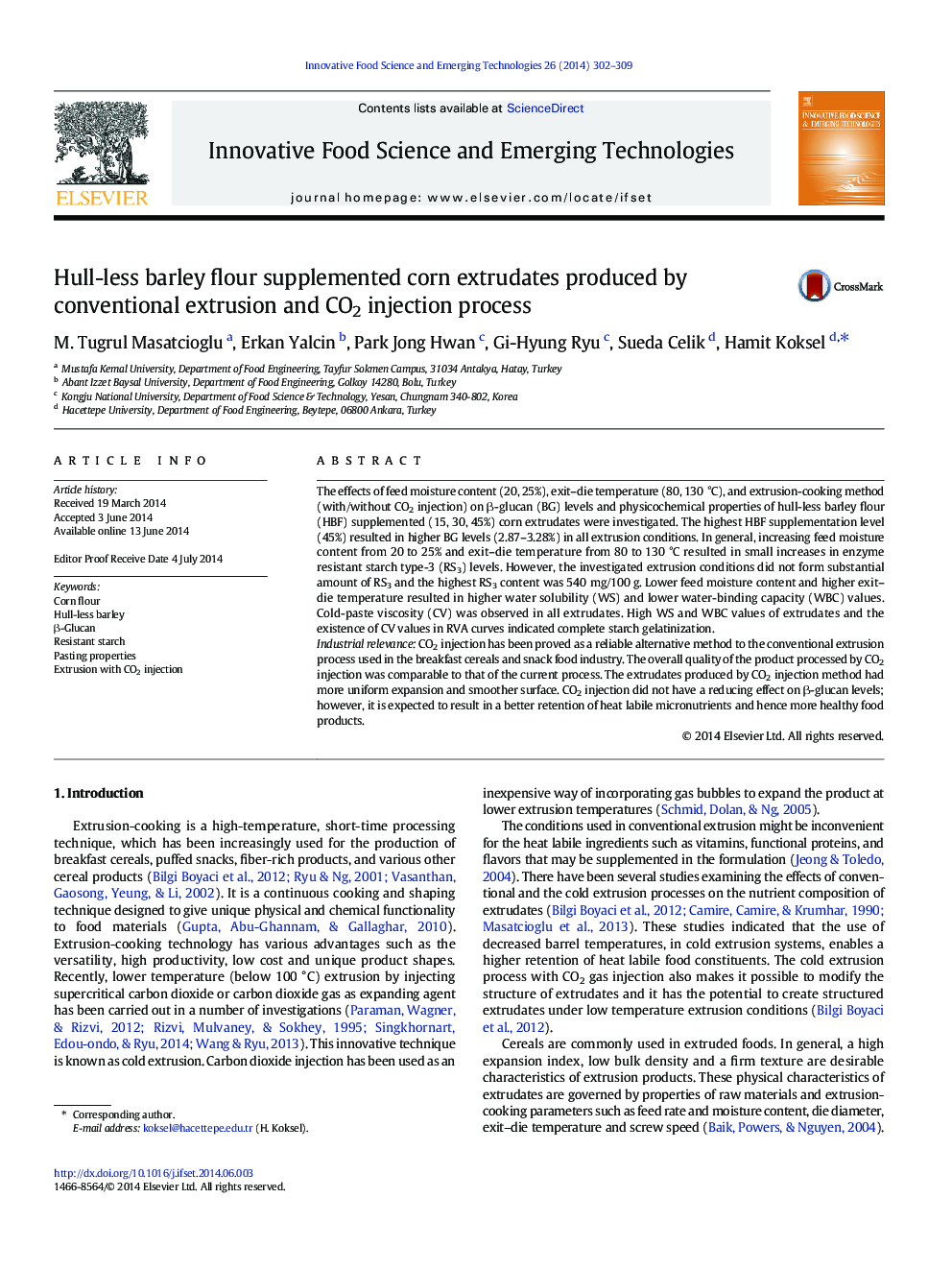| کد مقاله | کد نشریه | سال انتشار | مقاله انگلیسی | نسخه تمام متن |
|---|---|---|---|---|
| 2086684 | 1545540 | 2014 | 8 صفحه PDF | دانلود رایگان |

• CO2 injection did not have a reducing effect on β-glucan levels.
• Cold-paste viscosity was observed in all extrusion products.
• CO2 injected extrudates had more uniform expansion and smoother surface.
• High feed moisture and exit–die temperature resulted in small increases in RS3 level.
• CO2 injection can be used as a new alternative method for producing extruded foods.
The effects of feed moisture content (20, 25%), exit–die temperature (80, 130 °C), and extrusion-cooking method (with/without CO2 injection) on β-glucan (BG) levels and physicochemical properties of hull-less barley flour (HBF) supplemented (15, 30, 45%) corn extrudates were investigated. The highest HBF supplementation level (45%) resulted in higher BG levels (2.87–3.28%) in all extrusion conditions. In general, increasing feed moisture content from 20 to 25% and exit–die temperature from 80 to 130 °C resulted in small increases in enzyme resistant starch type-3 (RS3) levels. However, the investigated extrusion conditions did not form substantial amount of RS3 and the highest RS3 content was 540 mg/100 g. Lower feed moisture content and higher exit–die temperature resulted in higher water solubility (WS) and lower water-binding capacity (WBC) values. Cold-paste viscosity (CV) was observed in all extrudates. High WS and WBC values of extrudates and the existence of CV values in RVA curves indicated complete starch gelatinization.Industrial relevanceCO2 injection has been proved as a reliable alternative method to the conventional extrusion process used in the breakfast cereals and snack food industry. The overall quality of the product processed by CO2 injection was comparable to that of the current process. The extrudates produced by CO2 injection method had more uniform expansion and smoother surface. CO2 injection did not have a reducing effect on β-glucan levels; however, it is expected to result in a better retention of heat labile micronutrients and hence more healthy food products.
Journal: Innovative Food Science & Emerging Technologies - Volume 26, December 2014, Pages 302–309